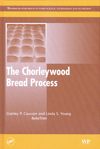Sorghum-fortified bread said to boost antioxidants, aid digestion

Researchers from Australia’s Curtin University and Deakin University studied whether they could make a tasty bread product with a slow starch digestion rate and high antioxidants—two constituents that may protect against disease. Grown in arid regions around the world, sorghum is a cereal crop with high antioxidant properties and a low glycemic index.
“Sorghum has a reputation in animal feed industries, and in food in the developing world, for its low digestibility and high polyphenolic antioxidants,” senior research fellow at Curtin’s Centre for Food Science Research Dr. Stuart K. Johnson says. “This can be a problem because it lowers the feed conversion efficiency for animal feed and, if food is in short supply, it can lead to under-nutrition and poor health.”
However, these properties may be beneficial in developed countries where food is in oversupply, as sorghum flour may lower blood glucose and suppress the appetite more. “The sorghum can also provide antioxidants to protect the body from oxidative stress, which can accelerate the progression of chronic diet-related diseases,” he adds.
The properties of the flatbread dough were evaluated by conventional industry methods to see if sorghum interfered with the required dough structure to make good bread.
Clinical studies are now required to evaluate the health effects of sorghum flatbreads, and the first stage will involve post-meal studies in health participants. Additional details are available at www.sciencedirect.com/science/article/pii/S0308814612004141.
Source: www.sciencewa.net.au
Looking for a reprint of this article?
From high-res PDFs to custom plaques, order your copy today!







